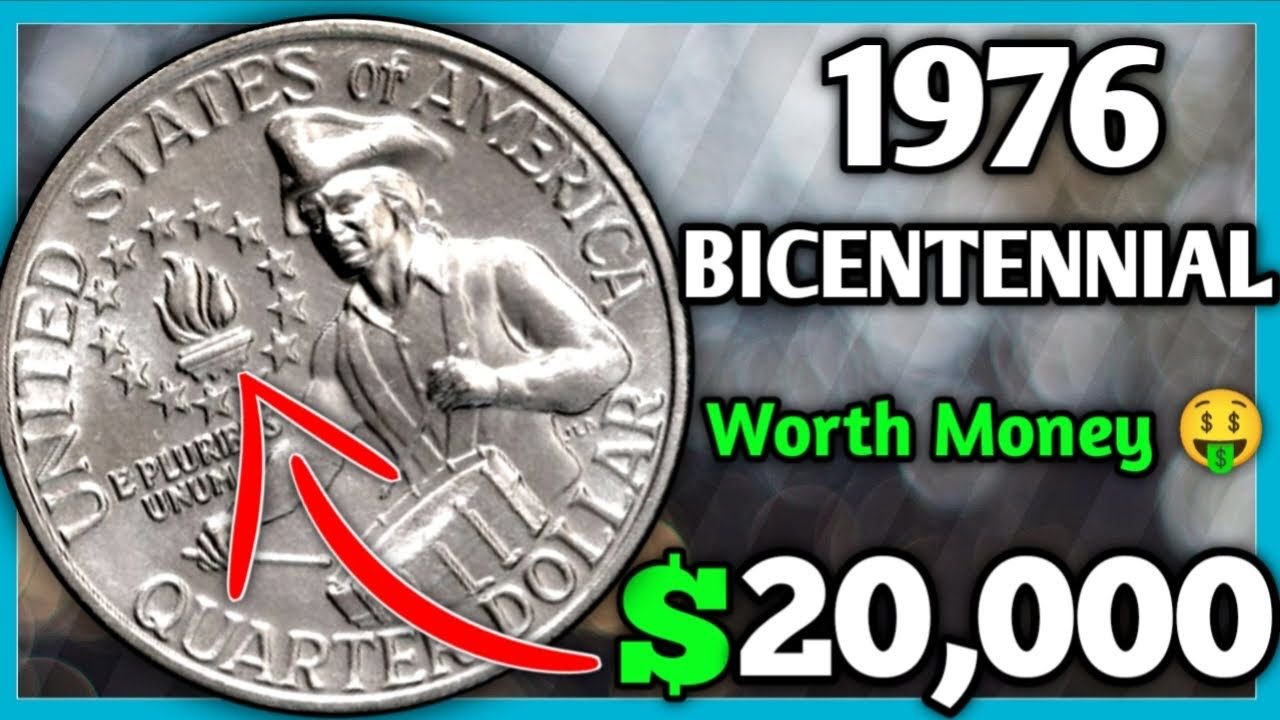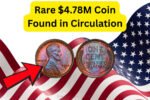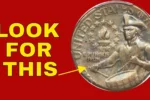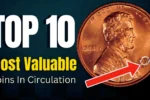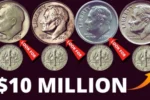Rare 1976 Quarter Could Be Worth $20,000 Million
It’s hard to believe that a small coin you’ve probably used to buy a pack of gum or drop into a vending machine could be worth a life-changing amount of money. But the world of coin collecting is full of surprises. One such surprise is a rare 1976 quarter that some claim could be worth as much as $20,000 million — that’s right, twenty billion dollars. While this number sounds unbelievable, the truth behind its high value lies in rarity, historical importance, and collector demand.
Let’s explore what makes the 1976 quarter so special and why you should start checking your spare change today.
Why 1976 Is a Key Year
The year 1976 marked the bicentennial of the United States — 200 years since the Declaration of Independence. To celebrate this historic occasion, the U.S. Mint released special coins, including the 1976 quarter. Unlike regular quarters, these featured a special reverse design showing a colonial drummer and a flame surrounded by 13 stars, representing the original colonies.
Although millions of these quarters were produced, some rare versions and misprints have captured the attention of collectors, driving their value sky-high.
Overview Table – Details of the Rare 1976 Quarter
| Feature | Description |
|---|---|
| Coin Name | 1976 Bicentennial Quarter |
| Estimated Value | Up to $20,000 million (for rare and special versions) |
| Obverse Design | George Washington’s profile |
| Reverse Design | Colonial drummer and torch with 13 stars |
| Special Minting | Some versions struck in silver or have minting errors |
| Circulation Status | Still possibly in pockets, jars, and change collections |
| Key Identifiers | “S” mint mark, silver content, or unusual striking errors |
Design & Style
The 1976 quarter features a unique design that sets it apart from regular quarters. On the front is George Washington’s familiar profile, but the back — created specifically for the bicentennial — shows a colonial drummer boy standing tall with a victory torch beside him. The reverse design was chosen through a public competition and symbolized patriotism and American pride.
While most of these quarters are copper-nickel clad, some were specially minted in 40% silver, especially those marked with an “S” for the San Francisco Mint. These are the versions collectors look for.
Rare Versions and Their Importance
Although most 1976 quarters aren’t worth more than face value, rare variants with errors or unique minting properties can reach astonishing prices. Some examples include:
-
Double Die Errors: Letters or images appear doubled due to a mistake during striking.
-
Off-Center Strikes: The coin design is not perfectly aligned.
-
Silver Clad Proofs: Meant for collectors and never released into general circulation.
If one such rare coin was never officially recorded or remained hidden for decades, it could attract incredibly high bids at auction — possibly explaining how some people estimate its value in the billions.
Engineered Rarity: How the Value Rises
Coin values don’t come only from their face value. Here’s what determines how much a coin can be worth:
-
Scarcity – The fewer there are, the more valuable they become.
-
Condition – Coins in mint or uncirculated condition fetch the highest prices.
-
Demand – When collectors compete, prices go up fast.
-
Historical Impact – Bicentennial coins hold extra meaning due to the U.S. 200th anniversary.
For the rare 1976 quarter, it’s this perfect combination that fuels the sky-high valuations.
Where You Might Find One
Don’t assume you need to go to an auction house to find a rare quarter. Many of these coins might be sitting in:
-
Old jars of change
-
Family collections
-
Rolls from the bank
-
Garage sales or flea markets
If you spot a 1976 quarter, check for a few key signs — especially the “S” mint mark, silver shine, or any strange visual anomalies.
How to Know If Your Quarter Is Valuable
You don’t need to be an expert, but you do need to look carefully. Here are a few tips:
-
Examine with a magnifying glass – Look for doubling in letters or off-center designs.
-
Check the edge – Silver versions don’t have the usual copper ring.
-
Weigh the coin – Silver coins are heavier.
-
Avoid cleaning it – Cleaning a rare coin reduces its value.
-
Get it appraised – Bring your coin to a certified numismatist.
FAQs – Frequently Asked Questions
Q1: Are all 1976 quarters valuable?
No. Most are worth just 25 cents. However, rare silver versions or coins with mint errors can be worth thousands or more.
Q2: How can I tell if I have a silver 1976 quarter?
Check for an “S” mint mark and inspect the coin’s edge. Silver coins won’t have the copper layer visible on the side.
Q3: Is it true that one quarter could be worth $20,000 million?
While this may sound exaggerated, rare coins with unknown features or undiscovered minting errors can sometimes be valued at astronomical amounts, especially when no other like it exists.
Q4: Where should I go to sell a valuable quarter?
Start with a coin appraiser or collector. If the coin is truly rare, auction houses or high-end dealers may be the best option.
Q5: Can I find a valuable quarter in circulation today?
Yes, it’s possible. Many people have rare coins without even knowing it, especially older coins passed down through families or found in spare change.
Final Thoughts: Is It Time to Check Your Change?
The idea that a small coin like a quarter could be worth $20,000 million may seem hard to believe, but the coin world is full of surprises. Between special editions, mint errors, and forgotten silver releases, there’s always a chance that your pocket change contains something truly valuable.
Even if you don’t strike it rich, you’ll learn something fascinating about American history and the art of coin-making along the way. So next time you’re handed a quarter — especially one from 1976 — take a closer look. Your ordinary change could just be a fortune in disguise.
